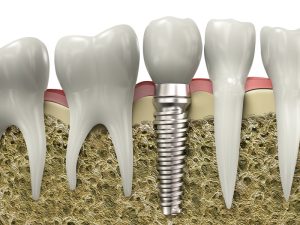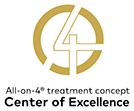blog | July 30, 2014 – San Francisco, CA
Dental implant surgery is commonly misunderstand by people, even in San Francisco, yet it is the most effective solution for long-term oral health. People tend to be reluctant about the going to the dentist for a few reasons: Cost, Pain, and Being unfamiliar with the procedures, thus being afraid.
As San Francisco’s Top Dental Implant Center, we’ve put together a brief overview of dental implant surgery and the technology behind it.
Reasons for Dental Implants
- Replace one or more missing teeth without affecting adjacent teeth.
- Resolve joint pain or bite problems caused by teeth shifting into missing tooth space.
- Restore a patient’s confident smile.
- Restore chewing, speech, and digestion.
- Restore or enhance facial tissues.
- Support a bridge or denture, making them more secure and comfortable.
Dental implants are changing the way people live! With them, people are rediscovering the comfort and confidence to eat, speak, laugh and enjoy life.
We care about the well-being of our patients oral health, and you see that from the very first visit. We add a personal touch that our patients have raved over for years. Word of mouth from our patients always includes the fact that we aren’t just a sterile office with scalpels in our hands and dollar signs in our eyes, but rather a warm, friendly, and no-nonsense staff that genuinely cares about what is best for our patients.
Resources on Dental Implants
Wikipedia: http://en.wikipedia.org/wiki/Dental_implant
A dental implant (also known as an endosseous implant or fixture) is a surgical component that interfaces with the bone of the jaw or skull to support a dental prosthesis such as a crown, bridge, denture, facial prosthesis or to act as anorthodontic anchor. The basis for modern dental implants is a biologic process called osseointegration where materials, such as titanium, form an intimate bond to bone. The implant fixture is first placed, so that it is likely to osseointegrate, then a dental prosthetic is added. A variable amount of healing time is required for osseointegration before either the dental prosthetic (a tooth, bridge or denture) is attached to the implant or an abutment is placed which will hold a dental prosthetic.
American Academy of Cosmetic Dentistry: http://www.aacd.com/index.php?module=cms&page=569
The key benefit of dental implants over other tooth replacement systems is that an implant connects directly to the jaw bone. It’s obviously not the same as the original connection, but functions just the same. When a tooth is lost, bone loss will eventually occur in that region because the root is no longer stimulating and stabilizing the bone. By using titanium–which biochemically joins to bone–to replace the root, you get a bond that more accurately replicates the one found in nature.
San Francisco Dental Implant Surgery: http://www.oralsurgery-sf.com/dental-implants
X-rays and impressions (molds) are taken of the jaw and teeth to determine bone, gum tissue, and spacing available for an implant. While the area is numb, the implant will be surgically placed into the bone and allowed to heal and integrate itself onto the bone for up to six months. Depending on the type of implant, a second surgery may be required in order to place the “post” that will hold the artificial tooth in place. With other implants the post and anchor are already attached and placed at the same time. After several weeks of healing, the artificial teeth are made and fitted to the post portion of the anchor. Because several fittings may be required, this step may take one to two months to complete. After a healing period, the artificial teeth are securely attached to the implant, providing excellent stability and comfort to the patient.
Call us today at (415) 992-9188 or schedule a consultation.


